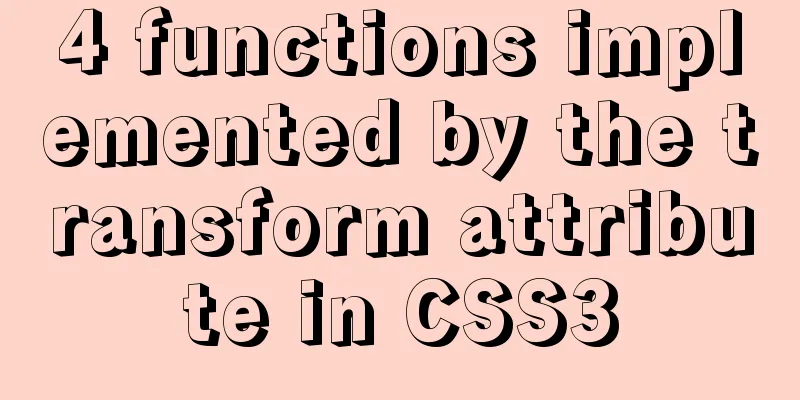How to output Chinese characters in Linux kernel

|
You can easily input Chinese and get Chinese output in the SSH terminal of Linux logged in from Windows/MacOS, such as the following:
But it is almost impossible to display Chinese on Linux's own virtual terminal : [root@localhost font]# echo leather shoes>/dev/tty2
Two question marks are displayed, and it is obvious that the Linux kernel cannot recognize Chinese. Why do you say that the Linux kernel cannot recognize Chinese? There is a relationship that needs to be clarified here:
For example, I used iTerm SSH on MacOS to connect to a remote CentOS Linux. All keyboard input and display output behaviors on iTerm were completed by the MacOS host machine of iTerm. On the contrary, if you input directly on the virtual terminal of this CentOS Linux and try to get output, then this input and output must be handled by the Linux kernel itself. That’s basically it. As for why the Linux kernel does not support Chinese, you need to understand the logic of how the Linux kernel treats unicode when processing virtual terminal input and output. This involves a lot of theoretical knowledge and is very annoying. Anyway, I just can't output Chinese here, and I'm not doing this. Obviously, this is not a work task that must be completed, so I'm just playing around. The goal of this article is to enable Linux's virtual terminal to output Chinese. Just output Chinese, even if it is just one Chinese character. Specifically, when I type the character 'A' on the keyboard, a Chinese character is displayed on the monitor. Therefore, this article does not intend to make the Linux kernel fully support Chinese on a large scale . Many people and communities have already done this, but the playability is not high. After all, this kind of thing can be done as a private job to make money. As long as it is a job that makes money, the playability is not high because it has to be fast. You don’t need to understand lengthy and boring unicode encoding, nor do you need to understand boring font formats. Just see how to play. Let's show the effect first. Here is a
It didn't look good, so I made the following
Here’s how this is accomplished. From the time you press a key on the keyboard to the time a character is finally displayed on the monitor of the virtual terminal, there are actually two mappings: Keyboard and character set mapping Convert a key event to a code in a character set, for example, when the 'A' key is pressed, map it to 0x41. Character set and font mapping Map the codewords of a character set to a dot matrix for display. For example, 0x41 is mapped to a character that can be seen as an 'A'. The Linux console cannot recognize character set codes exceeding 0x00ff, so it cannot process unicode codes exceeding 0x00ff. If you want it to do so, you have to change the kernel code. As I said earlier, modifying the kernel code to fully support Chinese on a large scale is a money-making business, but it is not only boring, but no one will share it. So I tried to modify the two mappings above to solve the problem. Since it is just for display, I will not modify the mapping between keyboard and character set , because then there will still be the problem of handling character set code words exceeding 0x00ff. This means that if you want to display Chinese, there is only one way left, and that is to modify the mapping of character sets and fonts ! This mapping must be stored somewhere in kernel memory or the file system. I can find the following information in the current kernel's config file: [root@localhost font]# cat /boot/config-3.10.0-862.11.6.el7.x86_64 |grep FONT # CONFIG_FONTS is not set CONFIG_FONT_8x8=y CONFIG_FONT_8x16=y Let's see what's in /proc/kallsyms: [root@localhost font]# cat /proc/kallsyms |grep font.*8x ffffffffb006a3e0 R font_vga_8x8 ffffffffb006a420 r fontdata_8x8 ffffffffb006ac20 R font_vga_8x16 ffffffffb006ac60 r fontdata_8x16 ffffffffb0307a10 r __ksymtab_font_vga_8x16 ffffffffb03234b8 r __kcrctab_font_vga_8x16 ffffffffb034246e r __kstrtab_font_vga_8x16 Well, this is the font stored in the kernel: [root@localhost rh]# ll ./drivers/video/console/font_8x* -rw-r--r--. 1 root root 95976 Sep 17 2018 ./drivers/video/console/font_8x16.c -rw-r--r--. 1 root root 50858 Sep 17 2018 ./drivers/video/console/font_8x8.c These two files will not be analyzed here. This just confirms the fact that the kernel will use its own font when it is initialized . After all, at this time, there is nothing but the kernel itself. The problem is that in user mode, the font can be changed and made fancy. These fonts cannot be handled by just two 8x8 and 8x16 fonts... At this time, we need to find the font file we installed in the distribution. We need to find it, then change the shape of a certain font inside it and turn it into Chinese! It's that simple. You don't have to search for where the font file is installed and saved. You can find it by executing the strace setfont command.
[root@localhost ~]# strace -F -e trace=open setfont
...
strace: Process 6276 attached
[pid 6276] open("/etc/ld.so.cache", O_RDONLY|O_CLOEXEC) = 4
...
[pid 6276] open("/lib/kbd/consolefonts/default8x16.psfu.gz", O_RDONLY|O_NOCTTY|O_NONBLOCK) = 4
[pid 6276] +++ exited with 0 +++
--- SIGCHLD {si_signo=SIGCHLD, si_code=CLD_EXITED, si_pid=6276, si_uid=0, si_status=0, si_utime=0, si_stime=0} ---
+++ exited with 0 +++That's it, /lib/kbd/consolefonts/default8x16.psfu.gz There is no need to search for the format of the font in psfu format, you can find specific characters through pattern recognition. I plan to find 'A' first, and then change the 'B' and 'C' behind it to my names "Zhao" and "Ya". First, I need to make the characters "赵" and "亚" to form a dot matrix. The following is my work "Zhao": 00000000 00000000 00100000 11111000 00100101 00100101 11111010 00100011 00111010 01100101 01100000 10011000 10000111 00000000 00000000 00000000
Next, we will use this dot matrix to replace the dot matrix of 'B', and at the same time make a "亚" character to replace the dot matrix of 'C'. The corresponding dot matrix diagram of the default font can be found at the following site:
We can get the dot matrix array of the 'A' character, and then match this array in the default8x16.psfu file. The code is as follows:
#include <stdio.h>
#include <stdlib.h>
#include <fcntl.h>
#include <linux/fb.h>
#include <string.h>
unsigned char zhaoya[32] = {
// The first line is "Zhao"
0x00, 0x00, 0x20, 0xf8, 0x25, 0x25, 0xfa, 0x23, 0x3a, 0x65, 0x60, 0x98, 0x87, 0x00, 0x00, 0x00,
// The second line is 0x00, 0x00, 0x00, 0x7e, 0x24, 0x24, 0x24, 0xa5, 0xa5, 0x66, 0x24, 0x24, 0x7e, 0x00, 0x00, 0x00
};
int main(int argc, char **argv)
{
int i = 0;
unsigned char buf[16];
off_t offset = 0;
int s = 0;
int fd = open("default8x16.psfu", O_RDWR);
i = pread(fd, buf, 8, offset);
while (1) {
i = pread(fd, buf, 16, offset);
if (s == 2) { // Replace 'C'
memcpy (buf, &zhaoya[16], 16);
i = pwrite(fd, buf, 16, offset);
break;
}
if (s == 1) { // Replace 'B'
memcpy (buf, &zhaoya[0], 16);
pwrite(fd, buf, 16, offset);
s = 2;
}
// Simple method to identify 'A'
if (buf[0] == 0x00 && buf[1] == 0x00 &&
buf[2] == 0x10 && buf[3] == 0x38) {
printf("A found at %d !\n", offset);
s = 1;
}
offset += 16;
}
}Compile and execute directly, and then set this default8x16.psfu as a parameter to the kernel: [root@localhost font]# setfont ./default8x16.psfu Now enter the Linux virtual terminal tty2. When you type the capital letter 'B' on the keyboard, the word "Zhao" will appear. Although So I'm going to find a higher resolution font. I found a high resolution one on Ubuntu I don't need to do it myself The code to replace the font is as follows:
#include <stdio.h>
#include <stdlib.h>
#include <fcntl.h>
#include <string.h>
#include "zhao"
#define L 28*2
int fd;
int main(int argc, char **argv)
{
unsigned char buf[L];
off_t offset = 0;
// This 0x0e60 is the offset obtained by pattern matching.
offset += 0x0e60;
fd = open("Lat7-VGA28x16.psf", O_RDWR);
pread(fd, buf, L, offset);
memset(buf, 0, L);
memcpy(buf+8, &code[0], 32);
pwrite(fd, buf, L, offset);
offset += L;
pread(fd, buf, L, offset);
memset(buf, 0, L);
memcpy(buf+8, &code[32], 32);
pwrite(fd, buf, L, offset);
offset += L;
pread(fd, buf, L, offset);
memset(buf, 0, L);
memcpy(buf+8, &code[64], 32);
pwrite(fd, buf, L, offset);
} Then its effect is:
not bad. In fact, the content of this article is just:
Well, actually the third and fourth points are the most important. Finally, if you want to know which fonts your current virtual terminal supports, type: [root@localhost font]# showconsolefont It will display:
The above is the full content of this article. I hope it will be helpful for everyone’s study. I also hope that everyone will support 123WORDPRESS.COM. You may also be interested in:
|
<<: Vue implements click feedback instructions for water ripple effect
>>: MySQL 8.0.13 decompression version installation and configuration method graphic tutorial
Recommend
Vue keeps the user logged in (various token storage methods)
Table of contents How to set cookies Disadvantage...
Example of how to implement local fuzzy search function in front-end JavaScript
Table of contents 1. Project Prospects 2. Knowled...
Zabbix uses PSK shared key to encrypt communication between Server and Agent
Since Zabbix version 3.0, it has supported encryp...
A brief discussion on this.$store.state.xx.xx in Vue
Table of contents Vue this.$store.state.xx.xx Get...
Several ways to hide Html elements
1. Use CSS Copy code The code is as follows: style...
There is an extra blank line after the html page uses include to import the php file
The method found on the Internet works The footer ...
5 issues you should pay attention to when making a web page
1. Color matching problem <br />A web page s...
WeChat applet learning notes: page configuration and routing
I have been studying and reviewing the developmen...
Detailed explanation of meta tags and usage in html
I won’t waste any more time talking nonsense, let...
How to configure two-way certificate verification on nginx proxy server
Generate a certificate chain Use the script to ge...
4 Scanning Tools for the Linux Desktop
While the paperless world has not yet emerged, mo...
Docker container operation instructions summary and detailed explanation
1. Create and run a container docker run -it --rm...
25 Examples of Using Circular Elements in Web Design
Today, this post lists some great examples of circ...
Build a WebRTC video chat in 5 minutes
In the previous article, I introduced the detaile...
Application nesting of HTML ul unordered tables
Application nesting of unordered lists Copy code T...

















